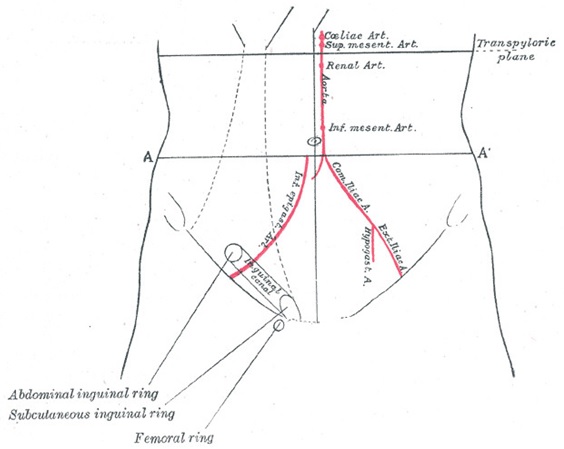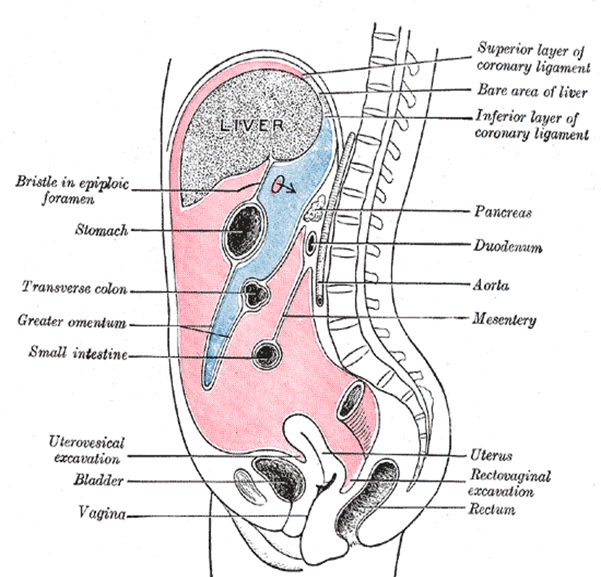The Abdomen Assignment Help
If you are looking for anatomy assignment help in topic of areas of abdomen, contact tutors of assignmenthelp.net.
Inguinal Canal
A short passage that extends inferiorly from the abdominal wall is termed as inguinal canal. It is a passageway for different structures from stomach to the external genitalia. It is also site for herniation.

Inguinal canal is made of anterior, posterior, superior and inferior walls along with superficial and deep openings. The aponeurosis of the external oblique and lateral position of the internal oblique muscle makes up the anterior wall of inguinal canal whereas transversalis fascia forms the posterior wall of the inguinal canal. Likewise the roof of inguinal canal is formed by internal oblique, transversalis fascia and transversus abdominis. The floor on the other hand is formed by inguinal ligament and thickened at the medial portion by lacunar ligament.
Rings are the two openings of the inguinal canal. Just above the midpoint of inguinal ligament and lateral to epigastric vessels is the internal ring whereas lying superior to the pubic tubercle and at the end of the inguinal canal is the superficial ring. The deep ring is formed by transversalis fascia that covers the interior of inguinal canal whereas the superficial ring is formed by external oblique that forms next covering of the inguinal canal.
When the intra-abdominal pressure increases, the abdominal innards are pushed to the inguinal canal. Therefore, to prevent herniation; the anterior and posterior walls muscles contract and compress down on the canal. In case of male, spermatic cord passes through this inguinal canal and in case of female rounds ligament of uterus crosses through this canal.
This is just an overview of the topic. If you want to include in-depth information on areas of abdomen assignment help allow the learned and experienced tutors to do this task.
Peritoneal cavity
The space between parietal peritoneum and visceral peritoneum is called peritoneal cavity that contains peritoneal fluid. This peritoneal fluid has electrolyte, water, antibodies and leucocytes. This fluid acts as lubricant and also protects abdomen from infection. Peritoneal cavity is divided into two main parts: the greater peritoneal sacs and the lesser peritoneal sacs.
The greater peritoneal sac:
It occupies the larger portion of peritoneal cavity and is further divided into two main compartment by transverse mesocolon called supracolic compartment and infracolic compartment. Both these compartments are also connected by paracolic gutters. The supracolic compartment consists of stomach, spleen and liver and lies above the transverse mesocolon whereas the infracolic compartment lies below the transverse mesocolon and consists of ascending and descending colon along with small intestine. The mesentery of small intestine divides infracolic compartment into two parts: left infracolic space and right infracolic space.
Email at support@assignmenthelp.net to get areas of abdomen assignment help from the qualified team at a nominal price.
The lesser peritoneal sac:
Lesser sac also called omental bursa lies next to the stomach and lesser omentum. It is connected to greater sac through epiploic foramen (an opening in omental bursa) that is present posterior to the free edge of lesser omentum.
Important points:
- Peritoneal cavity in pelvic of male is completely closed.
- Peritoneal cavity in pelvic of female is not completely closed.

Peritoneum
It lines the abdominal cavity covering the abdominal organ. It consists of two layers: parietal peritoneum and visceral peritoneum. Between these layers is present peritoneal. Simple squamous epithelial cells is present at the outer covering of both these layers.
Parietal peritoneum: Derived from somatic mesoderm in the embryo, this layer outlines the internal surface of abdominopelvic wall.
Visceral peritoneum: Derived from splanchnic mesoderm, it covers major part of abdomen.
Peritoneal cavity: The space between parietal peritoneum and visceral peritoneum is filled with a fluid called peritoneal cavity.
Division on the basis of relationship of abdomen with the peritoneum
Intraperitoneal organs: These organs are present in anterior as well as posterior surface of the visceral peritoneum. Example: stomach, spleen and liver.
Retroperitoneal organs: These organs are present in anterior surface of the peritoneum. Esophagus, rectum and kidney are primary retroperitoneal organs that remains outside the parietal peritoneum whereas ascending and descending colons are secondary retroperitoneal organs that were initially intraperitoneal but during the process of embryogenesis their mesentery fuses with posterior abdominal wall thus making these organs retroperitoneal.
24/7 areas of abdomen assignment help is provided to students by the team of experts linked to assignmenthelp.net. If you need any assistance related to information, diagrams, data or recent update on this topic or if you want to get your assignment rechecked from experts; don�t hesitate to call or email us.
To submit The Abdomen assignment upload assignment


